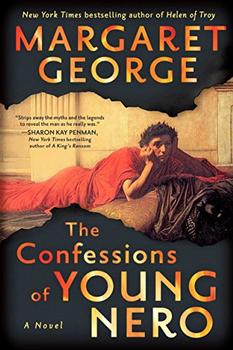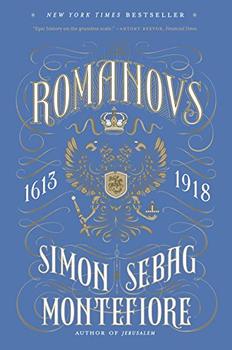Summary | Excerpt | Reviews | Beyond the book | Read-Alikes | Genres & Themes | Author Bio

The Story of History's Most Famous Assassination
by Barry StraussMost of us are familiar with the basics of Julius Caesar's death on March 15, 44 BCE. Ignoring the warnings of danger on the Ides of March, he went to the Senate and was stabbed to death by several senators, including close friend Brutus. Thorough yet immensely readable, The Death of Caesar fills in the details about this important historical event, separating fact from legend and conjecture, to paint as accurate a picture of the assassination as possible.
To research his subject, author Barry Strauss used the best texts available — the five early surviving accounts of the murder. The writers had access to eye-witness accounts that no longer exist, and consequently should contain at least some truth about what occurred. Strauss cautions however, that although "the five accounts are in basic agreement about the conspiracy and the crime," that "they disagree about certain important details" and each is biased in some way. The earliest and most important source, for example, was written by Nicolaus of Damascus (64 BCE-after 4 BCE) who was in the employ of the Emperor Augustus (Caesar's nephew and heir) and had incentive to "defame the conspirators." The other versions the author refers to are by Plutarch (45-125 CE); Suetonius (70-after 128 CE); Appian (90-160 CE); and Cassius Dio (164-after 229 CE).
One of the book's most interesting features is the way the author teases out which nuggets of information are most likely to be accurate. "[T]he historian has to exercise imagination, ingenuity, and caution. Above all, he or she needs to weigh the evidence at every point," Strauss writes, and then proceeds to do exactly that, sounding like a lawyer as he describes the murderers and their presumed motives. The thorough examination of various aspects of the assassination — timing, location, etc. — does not prevent the book from reading like a courtroom thriller at times.
The author's descriptions precisely capture Caesar and the men who killed him. Of Brutus he writes:
At forty, he was in the prime of life. He was proud, talented, sober, high-minded, and probably a little vain. At the very least, Brutus had leading-man looks. A coin and a marble bust, identified as Brutus's portrait, show the man's intelligence, his forceful personality, and his regular, classical features. He appears as vigorous, determined-looking and mature. He had a thick, curly head of hair, a pronounced brow, deep-set eyes, a straight nose, thick lips, a jutting chin, and a muscular neck. Brutus might have sweated a bit before Caesar because unlike Antony, Decimus or Octavian, he was not one of Caesar's longtime supporters but a rehabilitated enemy. Brutus was an example of Caesar's policy of clemency – forgiving his opponents and sometimes even rewarding them with public office.
The book also evaluates the aftermath of Caesar's death, and while this information is important, it's not as entertaining as the conspiracy and murder. As the primary actors scatter to raise armies and battle each other for supremacy, the narrative loses a certain amount of focus; there are simply too many moving parts to track concisely and follow. There's a sense that the author wanted to quickly wrap up all loose ends, but there were so many that this part felt like neither one thing nor the other. I wished the section had either been a shorter summary or more detailed and descriptive, filling the picture out better.
The Death of Caesar is ideal for readers who have only a passing knowledge of ancient Rome. The author weaves details of Roman life and politics, knowledge about the people involved in the conspiracy, and facts about the assassination itself into a well-researched yet entertaining historical narrative.
![]() This review was originally published in The BookBrowse Review in April 2015, and has been updated for the
April 2016 edition.
Click here to go to this issue.
This review was originally published in The BookBrowse Review in April 2015, and has been updated for the
April 2016 edition.
Click here to go to this issue.

If you liked The Death of Caesar, try these:

by Margaret George
Published 2018
The New York Times bestselling and legendary author of Helen of Troy and Elizabeth I now turns her gaze on Emperor Nero, one of the most notorious and misunderstood figures in history.

by Simon Sebag Montefiore
Published 2017
The Romanovs were the most successful dynasty of modern times, ruling a sixth of the world's surface for three centuries. How did one family turn a war-ruined principality into the world's greatest empire? And how did they lose it all?
Your guide toexceptional books
BookBrowse seeks out and recommends the best in contemporary fiction and nonfiction—books that not only engage and entertain but also deepen our understanding of ourselves and the world around us.